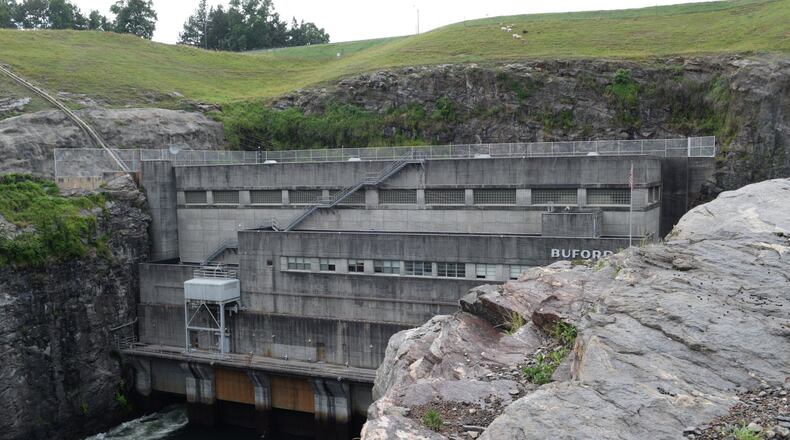Georgia Power and two other Atlanta-based companies are receiving federal grant funding from the Department of Energy (DOE) for a series of projects using existing dams to advance hydropower, the agency announced Wednesday.
The money comes from a $13 million pot carved out for projects nationwide by 2021′s Bipartisan Infrastructure Law and is part of an effort by President Joe Biden’s administration to accelerate the country’s transition away from burning fossil fuels.
While there are longstanding environmental concerns about the disruption that dams cause to aquatic ecosystems, hydropower is a significant source energy in the U.S. that does not generate greenhouse gas emissions. Hydropower accounts for just over 6% of the country’s total electricity generation and almost 30% of its renewable electricity supply.
Credit: AJC file
Credit: AJC file
Georgia Power sources about 2% of its electricity from hydropower plants.
Corey Vezina, the acting hydropower program manager at the DOE, said maintaining and growing that capacity is critical for the country to meet its climate goals.
Here’s more on the projects receiving funding:
Georgia Power “pumped storage” demonstration
Georgia Power will receive nearly $2.9 million to test the feasibility of retrofitting the existing Bartlett’s Ferry Hydroeclectric Dam on the Chattahoochee River near the Georgia-Alabama border into a “pumped storage hydropower” (PSH) facility.
PSH systems have been used for decades in the U.S. and abroad, and function much like traditional hydroelectric plants, except that they can use the same water over and over. When paired with solar or wind energy installations, they can also serve as large, unconventional batteries to store the excess power they produce.
When electricity supply outstrips demand, PSH systems use power generated by the sun or wind to pump water from a lower reservoir uphill into one at a higher elevation. That water can then be released back to the lower reservoir and used to spin turbines on its way down at times of increased electricity demand.
“When the wind dies down, the sun goes down or a quick storm rolls through ... you need to quickly adapt and hydropower and pumped storage can do that,” Vezina said.
Georgia Power spokesman Jacob Hawkins said the company is optimistic PSH will allow Bartlett’s Ferry to make better use of water during off-peak times and provide a useful complement to its growing solar fleet.
“We’re looking forward to collaboration with DOE, as well as turbine manufacturer GE, to help lead the industry in this research at Bartlett’s Ferry,” Hawkins said in a statement.
Emrgy spillway turbine project
Atlanta-based hydropower technology firm Emrgy is receiving $1.6 million to showcase how much electricity its proprietary turbines can generate when installed on smaller dams or in irrigation channels.
The company’s demonstration, which will not require any modification to existing infrastructure, will take place at a site in the South Columbia River Basin near Pasco, Washington.
Vezina said that with tens of thousands of non-hydropower dams scattered around the country, significant amounts of clean energy could be tapped if at least some can be retrofitted to generate electricity.
Improved hydropower maintenance monitoring
Turbine Logic, an Atlanta-based firm specializing in monitoring performance at power facilities, will receive just under $200,000 to deploy instruments to monitor for signs of routine maintenance needed at hydropower plants.
Specifically, the project will aim to identify signs of looseness between critical components inside hydropower turbines to boost their reliability.
A note of disclosure
This coverage is supported by a partnership with 1Earth Fund, the Kendeda Fund and Journalism Funding Partners. You can learn more and support our climate reporting by donating at ajc.com/donate/climate/
About the Author
Keep Reading
The Latest
Featured





